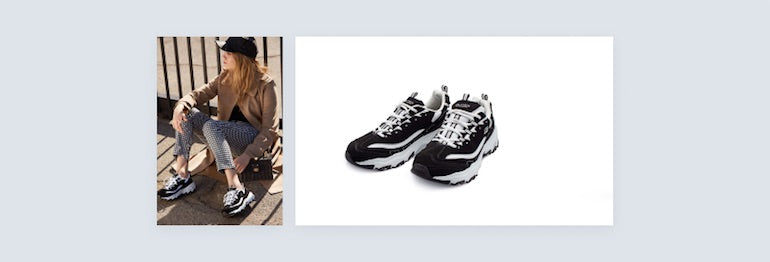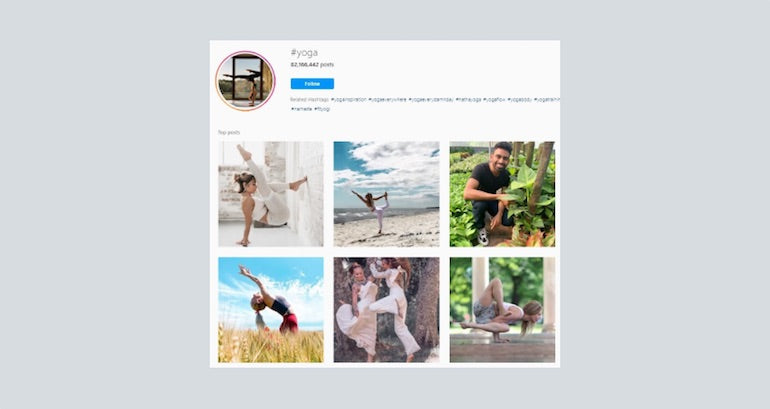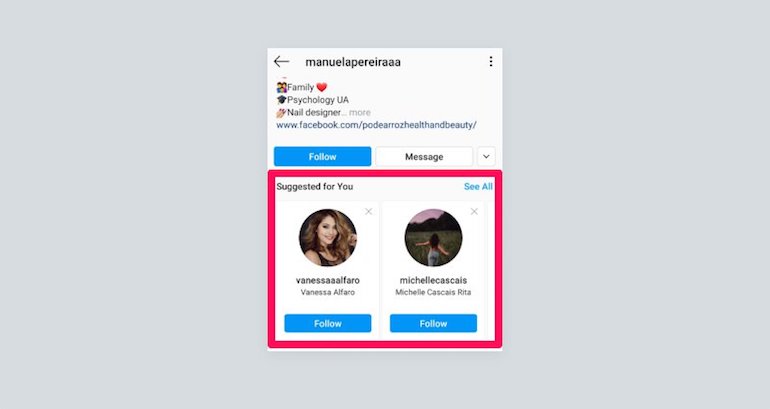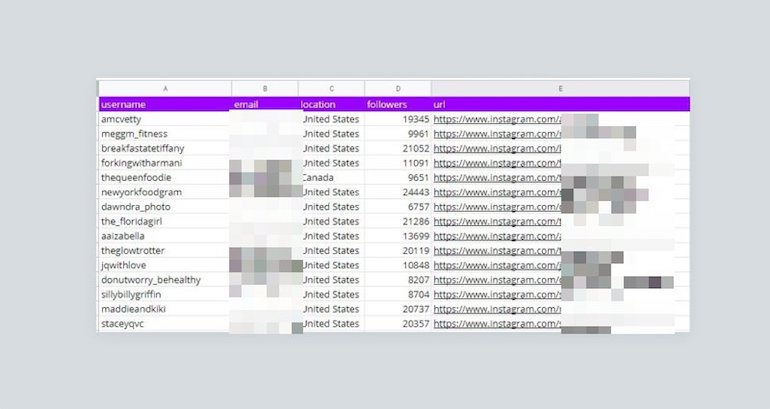If you work with merchants to create, launch, or update an ecommerce website, you know that high-quality content can make or break the project. Regardless of all the efforts that go into designing a beautiful store, unappealing content can ruin the entire experience.
Content builds trust, and trust leads to conversion.
The best ecommerce experience usually blends user-generated/influencer-generated lifestyle content with classical plain background product photography. Let me illustrate the distinction between the two with an image:

On the left, we see the product in real life context, while on the right, we see a descriptive view of the product.
This article will walk you through how lifestyle content can be more valuable than classical product photography. You’ll learn how you can build a content pipeline of micro-influencers on Instagram, and offer product photography as a service to clients. I will cover some fundamentals to help you succeed in terms of why influencer-generated content (IGC) is valuable, how to pitch the service to your clients, and how to price it.
Table of contents
- How to position IGC product photography as a service for your clients
- How to work with influencers to create content for your clients
The perceived value of influencer-generated content
As a partner, you’re probably always looking for alternative ways to create value for the merchants that you serve. After all, by being able to offer more value, you can earn additional revenue and make your clients happier.
It turns out that IGC has high perceived and real value for any B2C Shopify merchant. This is because:
- Product photography is expensive, while IGC is not. IGC is a great way to lower photography costs.
- IGC typically outperforms studio-quality content when it comes to conversions in your client’s Facebook or Instagram ads. Merchants invest considerable sums of money into these marketing channels, so the better the content performs, the higher their return on investment (ROI).
- Influencers generally have good taste, meaning they will put your client’s product in visually appealing scenarios.
"IGC has high perceived and real value for any B2C Shopify merchant."
In short, IGC can help reduce your client’s expenses while increasing their overall marketing ROI.
Before continuing, there are a few things to keep in mind when it comes to IGC.
1. IGC does not replace catalog photography
IGC offers an in-context view of the brand, but it does not replace product photography, which gives shoppers a descriptive view of your product.
Here is how David’s Tea uses influencer-generated Photography on their ecommerce website:

In this case, David’s Tea uses lifestyle photography to let the visitor know how the company can fit into their lifestyle (at breakfast, holidays, or while working).
And here is how they use catalog photography throughout their navigation:

In this scenario, David’s Tea uses typical product photography to facilitate the visitor’s choice. The tea is presented on a neutral background with a standard format, allowing the user to examine teas based on their appearance.
You should stick to standardized catalog photography for a product’s main image. You can use IGC to create context and tell a story when needed otherwise.
"You should stick to standardized catalog photography for a product’s main image. You can use IGC to create context and tell a story."
You might also like: Product Photography Tutorials—Master Ecommerce Images with These 6 Post-Production Techniques.
2. IGC is trustworthy and relatable
Think of influencer-generated content as a way to add texture to a merchant’s website. It makes your brand more relatable and authentic. Use it across the whole shopping experience on which you have influence as a partner.
You might also like: 10 Ways to Establish Trust on Ecommerce Sites and Apps.
3. IGC does have its Limits
Influencers are creative, which is an asset to your client. However, this desire for creativity can make it hard for you to ask for very specific content guidelines. This is something to keep in mind when working with creators.
How to position IGC product photography as a service for your clients
As I previously mentioned, IGC allows merchants to reduce their content costs significantly, while enhancing the buyer’s journey. A content library of lifestyle product shots is a tangible asset to give to a client. It is a value add which will keep you top of mind.
Your pitch as a partner to a merchant is:
- You get a better website experience
- You get fantastic content you can reuse anywhere on the web
- You get to cut content production costs
Pricing
Pricing your influencer-generated content service can be tricky. A good rule of thumb is to aim for a gross profit margin anywhere from 60 percent to 75 percent. Relationship management and collaboration costs will make up almost all of your costs.
"A good rule of thumb is to aim for a gross profit margin anywhere from 60 percent to 75 percent."
One thing to note is that the price you pay for each content asset will depend on many factors such as the complexity of the piece (e.g., a video takes more time than a picture) or the creator’s follower count. If content is your main purpose, you should target influencers with a lower follower count, as it will help you keep your costs lower.
Now that you have an understanding of the potential value of IGC, positioning, and potential pricing, we can look at actually working with influencers to generate the content.
How to work with influencers to create content for your clients
The workflow I use to create authentic content with micro-influencers can be broken down like this:
- Create content guidelines
- Find the influencers
- Pitch, negotiate with, and onboard the influencers
I’ll now expand on each of these in more detail.
1. Create content guidelines
When working with any creators, it is crucial to create a document to guide them in creating content for your clients. That being said, this document should not limit their creative output: keep it broad enough to encourage their creative freedom, while including specific non-negotiable requirements.
Your guidelines should include the following:
- Product’s unique selling proposition
- Brand description
- Product positioning
- A moodboard (these mood board apps might help)
Our goal with this document is to empower our micro-influencers to create the best content for a given product.
Your guidelines should be short. You don’t want to drown your creators in specific information, which is useless for their creation. I keep them under a page.
Content guidelines example
Here are the guidelines for a fictional merchant that focuses on pets.
Our brand
Our brand helps dogs with arthritis jump, run, and love life again.
Our product is made in the USA with all-natural and organic certified ingredients.
You can check out some reviews of pet owners talking about our product here: [link to any reviews you have].
The format
- Show a clear shot of the dog, and the product in a forward-facing position (we must see the brand name).
- We need 2 photos, and 1 short video shot (less than 30 seconds). Feel free to be creative with all of these takes. We trust your outside-the-box thinking :)
Moodboard
Please refer to these awesome posts as a source of inspiration to create your content:
- [URL to post 1]
- [URL to post 2]
- [URL to post 3]
The small details
If you post the content to your Instagram, please use the hashtag #ilovepets and tag the post as #sponsored.
If you have any questions, contact me at (your email) , I am your assigned campaign manager :)
Thank you for your help,
[Your Name]
Once you’ve created your guidelines, it’s time to find a few potential influencers.
2. Find the influencers
We are looking for creators to create lifestyle content based on our client’s product.
I recommend you find creators in the micro/nano range with 1,000 to 25,000 followers. These influencers will be more dedicated to creating something meaningful, which leads to a better output.
If you are looking to collaborate with a handful of creators on a given project, you can just do your own manual research to find them. Use the hashtag and location feeds as your starting point on Instagram. Simply identify your creator’s typical hashtag usage (e.g., #mom, #yoga, #fitness, etc.), and get scrolling.

When you discover a creator you like, check the Suggested for You widget on Instagram to find other creators like them.

You should organize all of your potential collaborators in a spreadsheet. Something simple like this can work:

Now that you have a list of potential influencers, you can move on to working on pricing and eventually hiring them to help you with your client’s needs.
3. Pitch, negotiate with, and onboard the influencers
You can think of pitching influencers as a short sales process:
- Contact the influencer (send an email or direct message(DM)) to initiate a potential collaboration
- Negotiate a rate and specific deliverables
- Onboard the influencer, brief them on the project, and gather relevant information
Let’s walk through these three steps.
a. Pitching
I recommend you contact these influencers by email if you can. Email is much easier to scale, automate, and organize with a CRM. However, some of them won’t have an address in their bio or associated with their profile. If they’re a good fit, feel free to contact them by DM.
You might also like: How to Write a Design Brief to Keep Your Web Design Projects on Track.
b. Negotiating
Influencer collaboration prices can vary widely. Prices will change based on the:
- Work that goes into creating the visual content
- Influencer’s follower count (even if they don’t share your content, there still is an opportunity cost for them)
- Niche
We want fresh content, without any consideration for the marketing aspect of influencers. You should narrow the targeting on profiles within the 2,000 to 10,000 followers range. Outside of that range, and you will pay a premium.
Start with a standard offer of $20 per photo and $100 per video. If creators are saying “yes” right away, you can lower your price or demand more product shots. If creators seem hesitant, you can increase the rate or request fewer deliverables. Again, the niche will have a high impact on the cost of collaboration.
If your client’s product is worth $75+, you could also try and strike a product exchange deal.
Remember that all creators are not created equally. I pay significantly higher prices for some of our creators that deliver outstanding results. Client amazement and satisfaction is much more important than saving a few hundred dollars, and you can also build this into the fair pricing for your clients.
"Client amazement and satisfaction is much more important than saving a few hundred dollars."
c. Onboarding
The purpose of onboarding an influencer is to make sure that I have all I need and that they have all they need.
Think of all the data points you require internally and ensure you collect them:
- First name
- Last name
- Instagram handle (@)
- Other social media channels
- Blog
This should also include specific information relevant to your client’s product (e.g., pet’s name for a pet influencer, or child’s name for a mom influencer).
You can use a form tool such as Typeform or Survey Monkey to capture this information using a standard form all of your influencers fill out, and a tool such as Google Sheets or Airtable to organize all of the entries.
Don’t forget to provide them with the information they need, such as your content guidelines.
Feel free to adjust this to your specific needs and use tools in your current tech stack.
Taking IGC further
Content creators have an audience, whether it be 1,000, 20,000, or 1,000,000 followers. If you treat creators well, they can also be a powerful acquisition channel for your clients. On one side, they endorse products in front of their audience, and on the other side, they create visually stunning content for your clients. I am still blown away by how engaged these micro-influencers can be when you develop great working relationships with them.
It turns out that influencer-generated content creation is a great upsell for your clients, as it blends exceptionally well with all of their ecommerce marketing. Your clients can get great product photos, but you might also be able to expand into offering marketing collaboration through Instagram by building relationships with these influencers as well.
Read more
- How to Boost Your Business’s Revenue with Ongoing Service Retainers
- Raise Prices at Your Agency with this Step-by-Step Approach
- Why Can't We Be Friends: Finding the Balance Between Marketing and Design
- Global Expansion Strategy: Why Partnerships are Key to Winning New Business
- Introducing the Next Shopify Partner Accelerator
- Email Deliverability: 5 Ways to Build a Strong Sender Reputation
- Build Your Ecommerce Business: Livestream
- 5 Retail Industry Trends to Get your Clients Excited about Shopify POS and Offline Selling
- What You Missed at Generate Conference 2014

